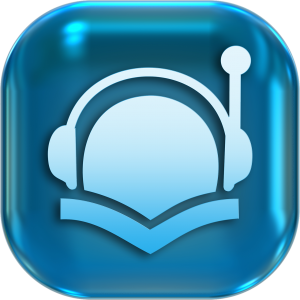Audio Editing Software

Audio editing software provides powerful tools for recording, editing, and producing professional quality audio. From musicians crafting songs to podcast producers polishing episodes, audio editing platforms enable creators to shape rich soundscapes. In this essay, we’ll explore popular audio editing tools, core capabilities, and techniques for getting the most out of these applications. Let’s dive in!
Overview of Audio Editing Software
At a high level, audio editing software provides tools to:
- Record audio from microphones, instruments, mixers, and other inputs
- Arrange multiple audio tracks on a timeline interface
- Edit recordings through cutting, copying, pasting sections
- Apply effects like compression, EQ, reverb, and more
- Mix and balance relative track volumes
- Export finalized audio files in formats like MP3, WAV, AIFF
While free open source tools exist, most professionals utilize commercial packages like:
- Avid Pro Tools – Industry standard DAW for music and post production
- Apple Logic Pro – Robust digital audio workstation for macOS
- Adobe Audition – Feature-packed editing environment popular with podcasters
- Ableton Live – Specialized multitrack software popular for electronic music production
- Presonus Studio One – User-friendly DAW for beginners, with pro features
- Cakewalk by Bandlab – Free professional-grade Windows DAW
- REAPER – Affordable cross-platform DAW with wide compatibility
These tools provide similar core functionality but differ inworkflows, interfaces, plugins, and specialty capabilities for diverse use cases.
Key Audio Editing Features
While specific capabilities vary between software, audio editing tools typically include:
- Multi-track timeline – Stack multiple recordings vertically on tracks to mix
- Non-destructive editing – Trim, cut, and apply effects non-destructively for flexibility
- Audio restoration – Reduce noise, enhance clarity, and repair imperfections
- Virtual instruments – Software synthesizers, samplers, and MIDI sequencing
- Effects plugins – Compressors, EQs, reverb, delay, modulation and more
- Time stretching – Lengthen or shorten recordings while maintaining pitch
- Clip editing – Trim, splice, crossfade, and apply fade in/outs surgically
- Automation – Program track parameter changes over time like volume and pan
- Key commands – Customizable shortcuts for speedy workflow
- Presets – Reusable effect chains and instrument configurations
- Analysis tools – View waveforms, spectrums, tuning, and metering
- File management – Media browsers and metadata tagging tools
- Collaboration – Cloud sharing and project exchange capabilities
These common features enable sound designers, musicians, podcasters, and other audio pros to sculpt professional recordings efficiently.
Audio Interface and Monitoring
To effectively work in audio editing software, creators need:
Audio interface – External hardware with audio inputs and outputs to connect mics, instruments and monitors. Popular models include Focusrite Scarlett and PreSonus Audiobox USB interfaces.
Studio monitors – Specialized speakers for critical listening to mixes. Models from Yamaha, KRK, and others offer flat frequency response.
Headphones – Quality headphones like Sony MDR-7506 provide alternate mixing perspective and isolation.
MIDI controller – Hardware MIDI keyboards, pads, and faders for tactile control of virtual instruments.
Microphones – Studio mics like the Shure SM57 or Blue Yeti capture clean recordings. Condenser mics work best.
Pop filter – Foam pop filters on vocal mics reduce harsh plosive sounds.
Mic stand – Boom arm studio mic stands position mics properly. Shock mounts reduce vibration.
This gear helps producers capture quality recordings and hear mixes accurately while editing.
Recording in Audio Editing Software
With interface and monitors connected, audio editing platforms provide robust recording capabilities:
Input settings – Select audio interface inputs tracks will record from. Set levels and monitor playback.
Arm tracks – Arm specific timeline tracks to record into them. Usually armed tracks start recording once the transport play button is hit.
Transport controls – Global play, stop, rewind controls manage recording session timeline.
Count-in – Count-in features cue a set number of preparatory metronome clicks before recording starts.
Punch recording – Punch in and out at precise timeline points to selectively record sections vs. full takes.
Loop recording – Repeatedly record over a section in a loop until the desired take is captured.
Overdubbing – Stack additional takes playing alongside previous recordings on timeline tracks.
Metronome – Built-in metronome options help musicians stay on beat. Can create count-in and custom click sounds.
Input monitoring – Zero-latency monitoring of live input helps performers record themselves accurately.
Clip stretching – Lengthen short clips to desired length without changing pitch or timing.
These tools allow capturing clean recordings, instrumental parts, overdubs, vocals, and more.
Editing Techniques
Once audio is recorded, editing refines arrangements, corrects mistakes, and polishes sound. Key editing methods include:
Trimming – Trim beginnings or endings of clips non-destructively, retaining originals.
Cutting / deleting – Remove unwanted sections like bad takes or silence.
Copying / pasting – Duplicate clips quickly to repeat sections.
Fading – Apply fade ins and outs to gracefully transition between clips and songs.
Crossfading – Overlap clip fades to seamlessly blend one into the next.
Time and pitch adjustments – Tweak clip speed, length or pitch independently.
Nudging – Micro adjusting clip positions in timeline for timing precision.
Quantization – Auto align notes and beats to a grid to correct sloppy timing.
Transposing – Change clip pitch and key up or down while retaining tempo and rhythm.
Consolidating – Merge multi-take clips on one track into a final “comp” take.
Editing aligns tracks, creates song structures, corrects mistakes, and tightens arrangements.
Mixing and Effects
Mixing balances relative track levels and enhances recordings tonally through effects:
Volume automation – Draw in track volume changes over time. Duck instrument levels under vocals etc.
Pan automation – Pan position sweeps, widening spreads for choruses etc.
Equalization (EQ) – Boost or attenuate frequencies to shape tonal qualities.
Compression – Smooth out dynamics and make consistent levels. Important for vocals.
Limiting – Prevent peaks from exceeding set loudness threshold.
Reverb – Add natural space ambience to tracks. Plate and hall options.
Delay – Echo effects with adjustable delay time and feedback.
Modulation – Chorus, flanger, phaser effects add movement and interest.
Amp simulation – Mimic famous guitar amp and cabinet tone virtually.
Careful mixing creates polished, dynamic, and balanced audio ready for release and distribution.
Mastering and Exporting
The final polishing stage is mastering:
Sequencing – Arrange songs into desired playlist order with gaps between.
Fades and crossfades – Add subtle fade ins and outs between adjacent songs.
Level balancing – Ensure relative leveling between songs sounds natural when sequenced together.
Loudness maximizing – Light general compression and limiting for improved loudness consistency without distortion.
Multiband processing – Compress and EQ specific tonal bands. Bass vs mids etc.
Dithering – Add subtle noise to reduce quantization distortion in 16 or 24 bit exports.
ID3 metadata tagging – Populate track artist, album, artwork ID3 tags before export.
Codecs and formats – Export in appropriate formats like compressed MP3 files or uncompressed AIFF or WAV.
Sample rate and bit depth – Higher resolution exports retain more sonic detail. CD standard is 44.1kHz, 16bit.
Careful mastering and export preps professional audio for distribution through streaming platforms, podcast networks, YouTube, or direct downloads.
Audio Editing Software for Podcasting
Many podcast producers gravitate toward specialized audio editing tools tailored for podcast workflows:
Multitrack editing – Simultaneously edit voice, remote guest, intro/outro music tracks.
Vocal enhancement plugins – Compression, EQ, noise removal, de-essing for clearer speech.
Ducking and sidechaining – Automatically duck music under speech.
Format presets – Export in MP3 profiles optimized for podcast distribution.
Chapter markers – Mark timeline with chapter IDs for podcast apps.
Loudness normalization – Target audio standard loudness levels like -16 LUFS.
Metadata editing – Populate podcasting metadata fields like episode titles and summaries.
Show templates – Reuse consistent intros/outros and settings between episodes.
Collaboration features – Guest podcast portals for uploading remote audio.
Optimized podcast tools speed up producing and publishing professional episodes.
Audio Editing Techniques for Music Production
Music production in software like Ableton Live or Logic Pro benefits from specialized techniques:
MIDI recording – Capture melodies, harmonies, and rhythms as MIDI data from keyboards, pads, etc.
MIDI editing – Refine note timings, velocities, and other MIDI parameters. Quantization options.
Instrument layering – Stack multiple instruments like piano, strings, pads playing together.
Clip launching – Launch audio and MIDI clip playback flexibly and creatively.
Warping and tempo matching -Stretch audio clips to fit project tempo and rhythm with warping.
Clip envelopes – Automate filter, pitch, volume, pan and effect parameters per clip.
Session View – Flexibly experiment with arrangements by triggering clips non-linearly.
Audio slicing – Automatically slice single recordings into playable samples.
Rhythm matching – Extract groove profile from one clip to apply timing feel to another.
MIDI mappings – Map hardware controls like faders, knobs and pads to software parameters.
These techniques help electronic musicians and beatmakers produce intricately arranged tracks.
Conclusion
Audio editing platforms like Pro Tools, Logic Pro, Ableton Live, and Audition provide immense creative possibilities for shaping professional sound. While learning curves exist, core competencies like recording, editing, mixing, and exporting can be honed through practice. For many music and audio creators, software has largely replaced physical studios. The power lies in mastering workflows and features tailored specifically to intended use cases, whether music production, sound design, or podcasting. With the right audio interface setup and software expertise, bedroom producers can achieve studio-quality results. Audio editing applications enable any creative vision to become reality.








